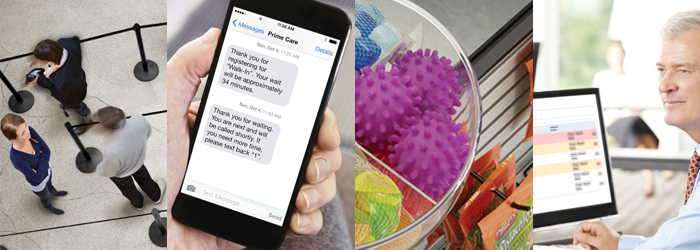
What is Real-Time Queue Management?

Though 90 percent of all sales still occur in store, online shopping is a big business and there is increasing competition for customers’ hearts and wallets. Getting better insight into the shopping experience has never been more important. And the make-it-or-break-it point comes at the very end of a shopper’s trip.
Focusing on the Checkout Line
It’s easy to assume that once a customer has reached the checkout line, the deal is sealed. But this is the most critical juncture of any visit. Queuing at the checkout to pay is the last thing a customer does before leaving. This is not the place to create frustration or make a poor impression. Any missteps at this point of the transaction can make a customer less likely to return, and very unlikely to speak well of their experience to family, friends, acquaintances, and even perfect strangers. Retailers who closely monitor their checkout queues and make customer wait time a key performance indicator are the businesses that have an edge. This advantage is realized through higher customer satisfaction and optimized labor costs.
Relying on Checkout Queue Analytics
Real-time queue management technology uses state-of-the-art 3D video appliances and analytic software to provide actionable information for store managers, analysts, and executives. It allows retailers and other service providers to proactively monitor, predict, and address customer demand to minimize wait time and maximize customer satisfaction. Technology integrates open cashier stations with checkout line conditions to predict wait times and service breakdowns before they occur. And they build in dashboards and real-time alerts to monitor demand, performance and queues, and proactively allocate available resources to demand. The implementation of and reliance on real-time queue management rings with it multiple benefits:
- Stores can accurately and continuously count traffic to obtain a core understanding of the sales opportunities that are present.
- Queue times and service/transaction times can be measured for every single customer in the queue, offering incredible, specific, usable data.
- Predictive monitoring can be used to proactively respond to rushes and lulls in checkout lines by opening cashier stations before a bottleneck occurs or shifting labor among lower priority tasks.
- Real-time and historical reports can be used to optimize staff allocations to reduce the length of checkout lines and improve customer-to-employee ratios in key departments.
Real-Time Benefits for Higher-Ups
With real-time queue management technology, the guesswork of balancing customer service and labor costs is eliminated for store managers. Recommendations for the opening and closing of registers are provided based on demand. Managers can also provide a consistent customer experience by having the ability to monitor and be proactive about to forming queues with the help of dashboards as well as email and mobile alerts. Executives and analysts will find that they are able to track performance across multiple stores and regions, allowing them to make truly informed decisions when it comes to budgets, purchasing, staffing, and viability. This real-time queue monitoring knowledge enhances the front office’s ability to integrate sales or HR data to model the impact of customer service levels on conversion rates, staff performance, and the like. Execs are also able to effectively manage labor allotments based on actual customer service needs while monitoring and optimizing self-checkout migration strategy. The advantages of real-time queue management extend from CEO to branch manager to floor supervisor to, most of all, customer. A well-managed queue creates a happy, satisfied patron, and that can ultimately lead to a healthier bottom line. Contact a Lavi expert to discuss the integration of real-time queue management in your business.
SUBSCRIBE
Subscribe to stay up-to-date with new products, resources information and news.
RECENT RESOURCES
4 Psychological Reasons Your Customers Hate Waiting In Line
ViewFrom Bleachers To Bookstores: 4 Campus Crowd Control Solutions
ViewCrowd Control Systems for Large Venues
ViewWrigley Field Case Study: Just Walk Out Technology
View








